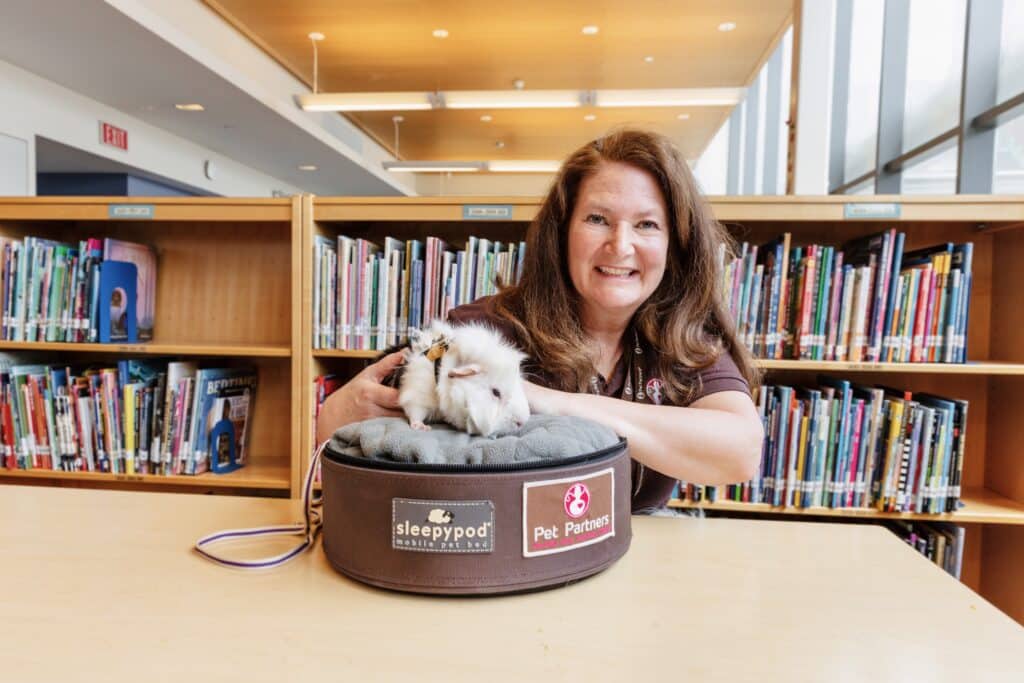



The positive impacts of a Pet Partners therapy animal team visit often extends well past the visit itself. In this guest post, Dr. Elizabeth Lynch, DVM, shares how one special therapy guinea pig inspired an entire school to embrace the healing benefits of animal-assisted interventions in their classrooms every day.
In the summer of 2020, during the height of the COVID-19 pandemic, my daughter and I visited New Jersey Guinea Pig Rescue. We were searching for candidates to participate in pet therapy, or more accurately, animal-assisted interventions. As a veterinarian and seasoned volunteer therapy animal handler, I knew just what to look for: a calm nature, inquisitive tendencies, an out-going personality, and a people-seeking friendliness factor.
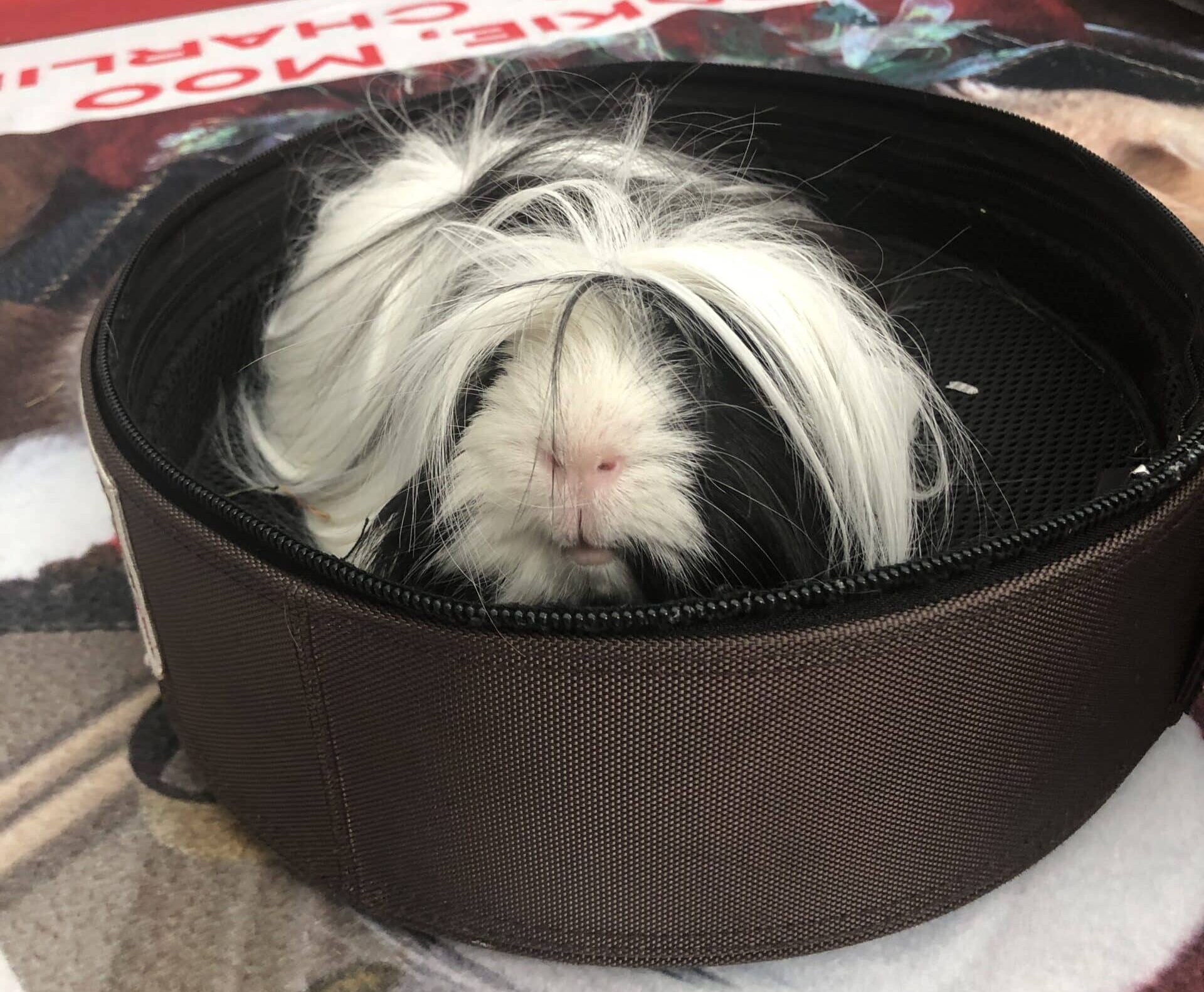
Moo, a black and white, long-haired, Peruvian guinea pig with bangs, came home to the Lynch family along with three other males. He had all the ideal therapy animal characteristics I was looking for, plus, his super-cute hairdo was the icing on the top. We lovingly dubbed Moo and his pals the guinea pig team.
During the six months of training, the guinea pigs learned to wear harnesses and leads, comfortably travel in a carrier in the car, tolerate frequent baths and grooming, visit new people in unfamiliar locations, and few important tricks. One of the tricks — watching as the pages of a book were turned — was key to their new vocation. These guinea pigs were destined to be reading therapy animals who listened attentively while children practiced reading aloud.
After passing his Pet Partners animal therapy team evaluation, Moo embarked on a journey of pet therapy. First, he helped patients and doctors in a private medical office feel happier and more relaxed for their treatment.
Then, he helped adults in a drug and alcohol recovery program develop positive coping strategies. One of the proposed strategies was adopting a small pet that would keep them busy with the routine of caring for an animal and provide emotional support to help the client keep sober.
Finally, we took Moo the guinea pig to Hamilton Ave. Elementary School. There, his attentive listening and page-watching skills were much appreciated by the teachers and students alike.
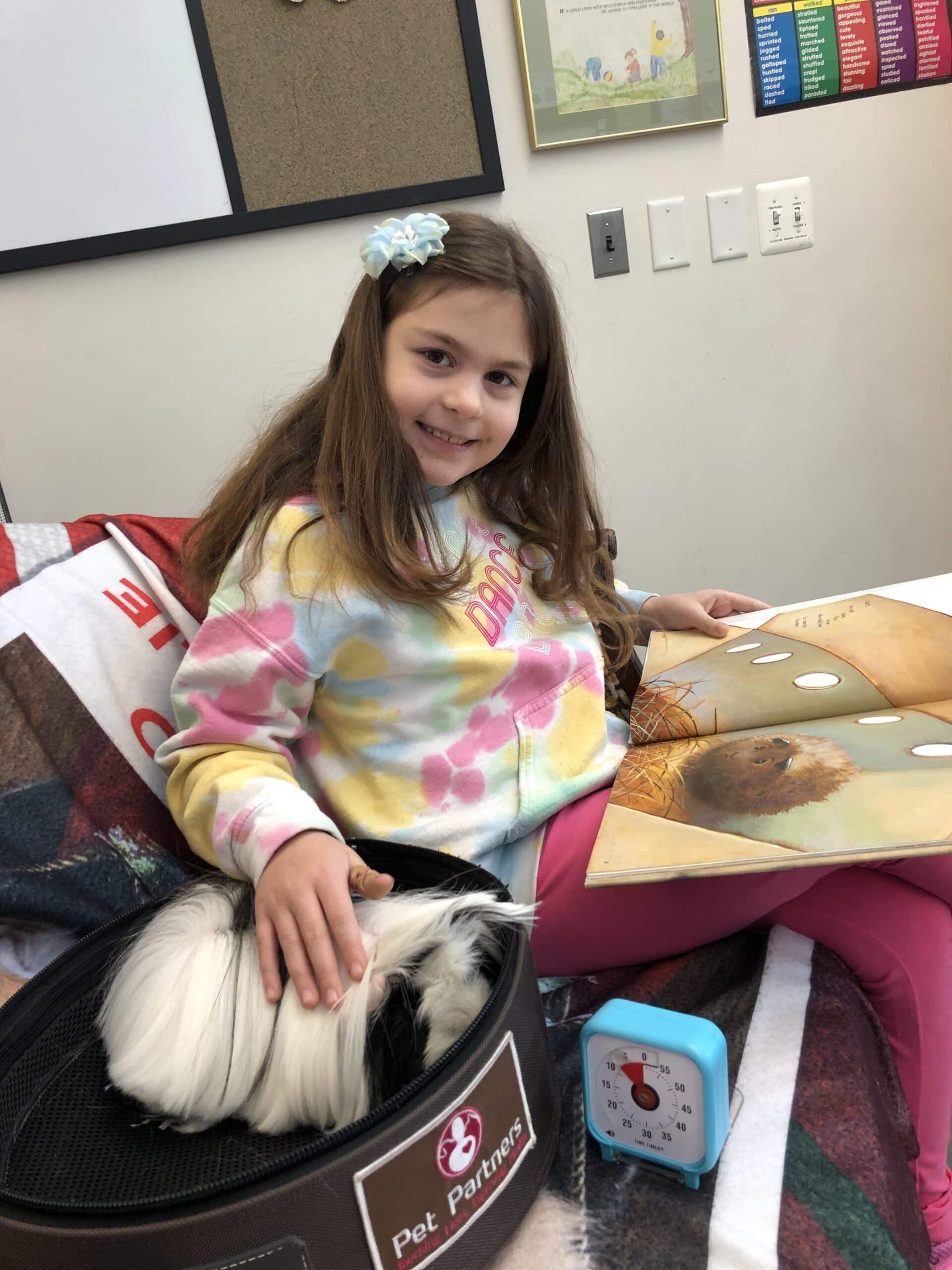
Reading to a therapy animal or to a family pet has been shown in studies to improve reading fluency, comprehension and accuracy for people of all ages, but especially with children. A therapy animal is non-judgmental. They won’t correct a child or rush them while reading, so the child feels less pressure and stress when reading with a therapy animal versus an adult.
It’s speculated that the release of oxytocin from petting a friendly therapy animal helps to decrease stress hormones in the child’s body, thus helping to unlock their brain to process information and learn. The main effect is that reading with a therapy animal is a pleasurable experience which children are eager to repeat. Creating a stress-free reading environment is especially crucial for reluctant readers and students struggling with reading disabilities.
With the help of a therapy animal, fluency and a lifelong love of reading can blossom. Pet Partners has a special initiative focused on reading to therapy dogs and other therapy animals called Read With Me™. Volunteer therapy teams get special materials with specific guidance on where to visit, how to engage readers, and even suggestions on books to read.
For the past three years, Moo has joined Ms. Angotto’s class every week to listen to the latest in elementary school level literature. Be it Captain Underpants, Diary of a Wimpy Kid, or poetry, we like to say he seems especially interested in stories with an animal protagonist, as well as any story mentioning food.
Usually quite sedentary, Moo will lift his head and sniff, and sometimes stand on his hind legs to see what’s happening while being read to. Each child is allotted 10 minutes of uninterrupted connection with the therapy guinea pig while they snuggle in to enjoy a good read. Afterward, Moo gets a reward for being a good listener, proffered by the delighted student.
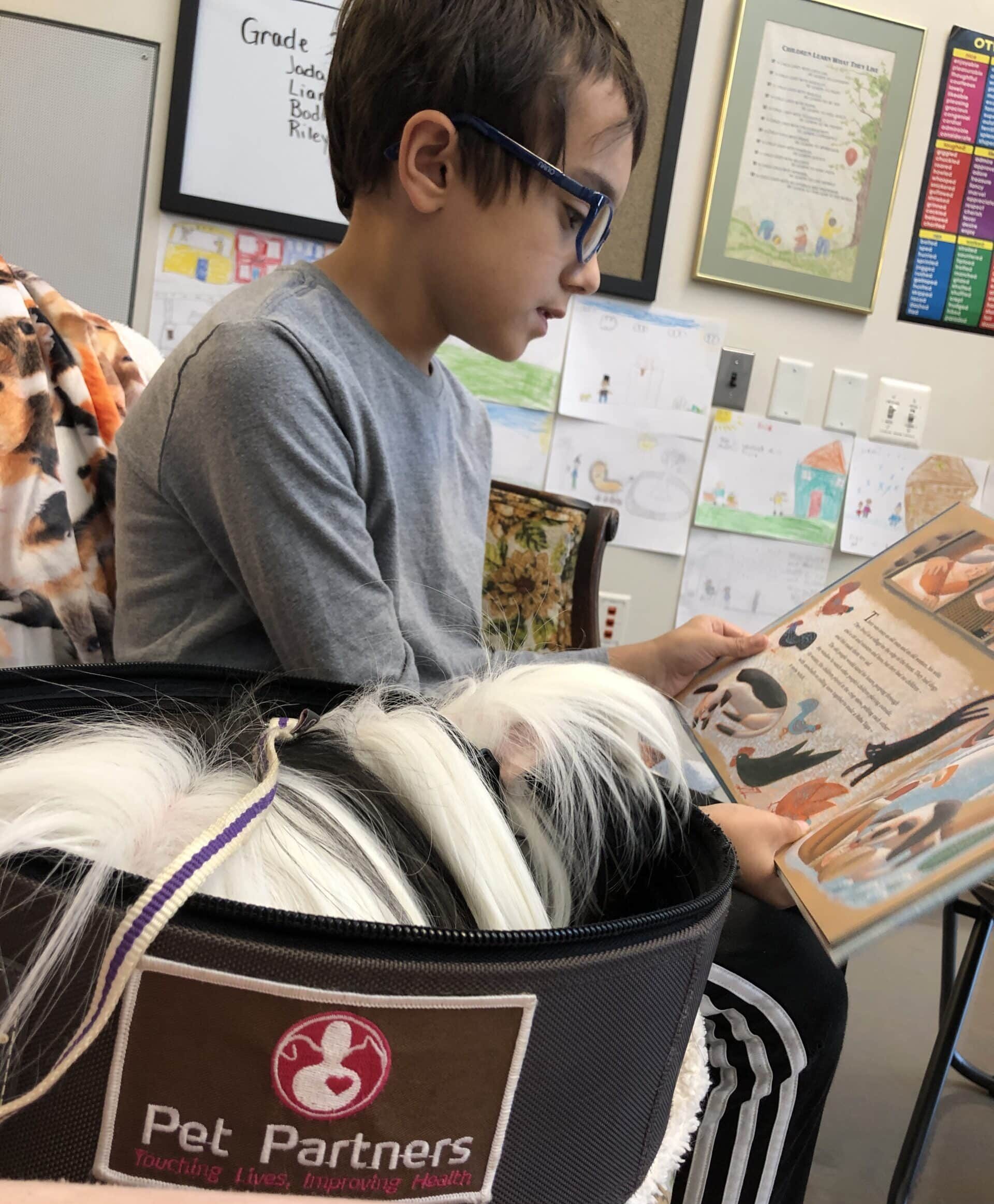
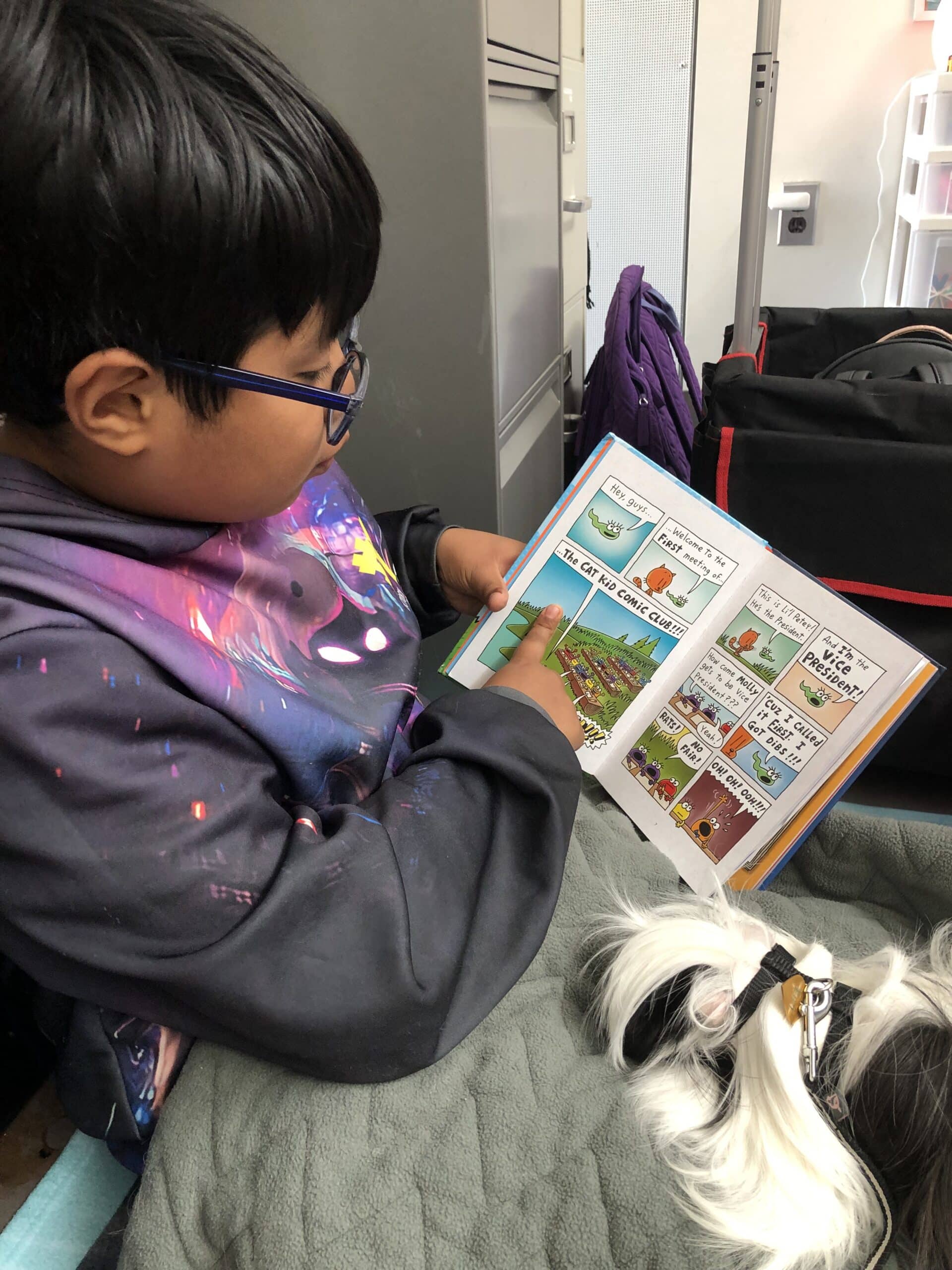

Though a regular at Hamilton Avenue School, I also took Moo to visit other venues. Last October, the community group I’m part of, Pet Partners of Fairfield County in Connecticut, was invited to visit Rowayton Elementary school during their wellness week to demonstrate how therapy animals have a positive effect on people.
The therapy animal teams included several canines, as well as two therapy guinea pigs, including Moo. Moo must have made quite a positive impression because when Tina Saunders, a fourth-grade teacher, asked if she could add a guinea pig as a classroom pet, Principal Dr. Casey Cummings thought it was an excellent idea!
I learned that Ms. Saunders’ class spent weeks carefully researching the care of guinea pigs in preparation for their new arrival. They learned how guinea pigs communicate through body language and sounds. Safety rules were drafted, including only holding the pet when students are sitting down, giving plenty of rest time, and respecting space if the pet needs to take a break — all measures that we as therapy animal handlers also take to protect the welfare of the animals during visits.
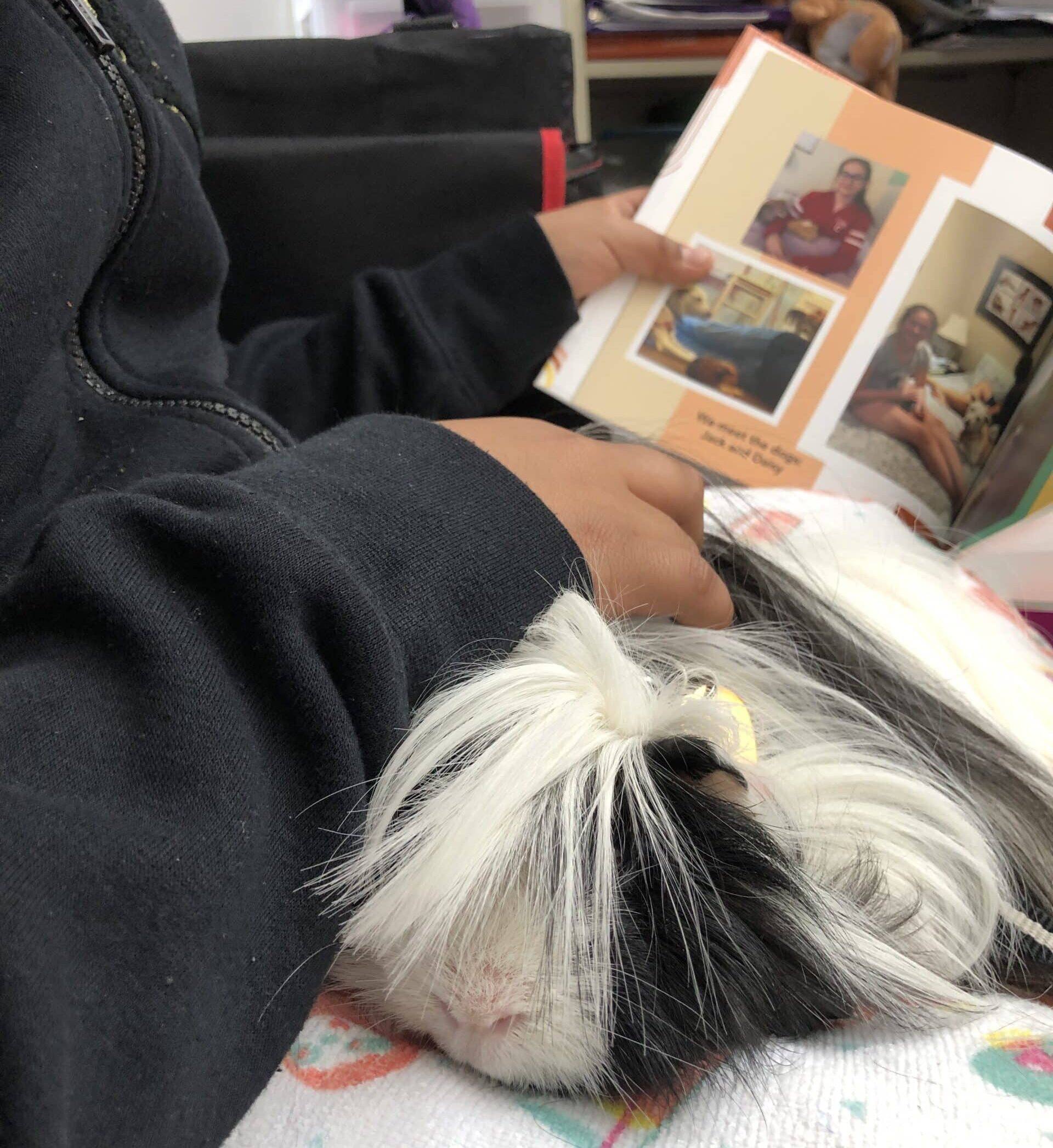
I’m happy to share that their classroom pet, a Coronet guinea pig named Elvis, has had much the same impact as the therapy animals who visited the school did. Elvis has a calming effect on the classroom and has lightened the mood considerably. Children seem happier and more attentive with him around.
One student, who has difficulty focusing, eagerly completes his work when Elvis is supervising on his desk. The children have learned to consider another’s perspective and will actively advocate for Elvis if they feel he is uncomfortable or needs something.
There is significant scientific evidence suggesting that classroom pets help improve academic performance and social skills in children, including teaching important values like compassion, empathy, respect, and responsibility for other living things.
As a Pet Partners volunteer therapy animal team, you never know what impact your visits will have. One visit from a Pet Partners therapy guinea pig inspired a teacher to welcome pet therapy into her classroom on a permanent basis.
Ms. Saunders told me, “The payoff is amazing, but it is a commitment. Elvis has shifted the culture of the school, and we are so happy he has joined our class.”
I am so proud that Moo and I played a part in this positive transformation for Rowayton Elementary School. It is amazing to witness the power of a two-pound pet to unlock the potential in a child or even adults. For this Pet Partners guinea pig team, it is without a doubt: mission accomplished.
Dr. Elizabeth Lynch, DVM, has been a Pet Partners volunteer for over 20 years, serving as a handler, evaluator and national program educator. Her registered therapy animals have included dogs, guinea pigs and a rabbit. She is also a member of Pet Partners’ sister organization, the Association of Animal-Assisted Intervention Professionals (AAAIP), for those who partner with animals in vocational practice.
Are you a pet owner interested in volunteering with Pet Partners? Read our therapy animal volunteer overview!